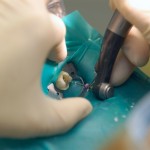
Pain following root canal treatment has been reported to occur in 3-58% of patients and is an important concern for patients and dentists alike. A number of factors associated with peri-radicular tissue damage; mechanical instrumentation, chemical irrigants, intracanal medicaments, and microbial effects have been related to post endodontic pain. A number of approaches have been adopted to reduce post treatment pain including occlusal reduction, intracanal medicaments and pre and post-operative medication with a number of trials showing that premedication is effective.
The aim of this review was to identify the most effective oral premedication in reducing pain in adults after nonsurgical root canal therapy (NSRCT) using network meta-analysis.
Methods
Searches were conducted in the Medline, EBSCOhost, Cochrane CENTRAL databases, standard endodontic textbooks and ClinicalTrials.gov database. Randomised controlled trials (RCTs) evaluating the efficacy of oral premedications (alone or in combination), before nonsurgical root canal therapy compared with other agents, placebo, or no treatment in adult patients for postoperative pain reported using visual analogue scales were considered.
Two reviewers independently screened, selected and abstracted data from the studies. Risk of bias was assessed using the revised Cochrane tool. Pair-wise meta-analysis, network meta-analysis, were undertaken with overall quality of evidence assessed using GRADE.
Results
- 16 studies involving a total of 1005 patients were included.
- 13 studies were considered to have a low risk of bias, 2 unclear risk and 1 a high risk.
- 11 studies contributed to the meta-analysis
- Compared with placebo, corticosteroids (prednisolone 30-40 mg) was ranked best for reducing postoperative pain; median difference [MD] for the pain score at:-
- 6 hours; MD = -18.14 (95% CI; -32.90 to -3.37) [very low quality evidence]
- 12 hours; MD = -22.17 (95% CI, -36.03 to -8.32) [moderate quality evidence]
- 24 hours; MD = -21.50 (95% CI, -37.95 to -5.06) [very low quality evidence]
- Nonsteroidal anti-inflammatory drugs were ranked least among the medications, and the quality of this evidence was very low.
- Additional analysis based on the chemical name showed that sulindac, ketorolac, and ibuprofen significantly reduced pain at 6 hours, whereas piroxicam and prednisolone significantly reduced the pain at 12 and 24 hours.
- Etodolac was found to be least effective in reducing pain.
- Overall, the evidence was of moderate to very low quality.
Conclusions
The authors concluded: –
…oral premedication has the ability to reduce postoperative pain after nonsurgical root canal treatment. This outcome may also be influenced by the patient’s perception of analgesic drugs in the prevention of discomfort. Thorough patient assessment regarding his or her experiences with analgesic medications will enable the clinician to carefully choose whether or not to provide premedication and which one for maximum patient benefit. The use of narcotic agents before nonsurgical root canal procedures for postoperative pain control needs further research; the use of piroxicam or prednisolone would be the premedication of choice.
Comments
The group have previously looked at oral premedication to improve the anaesthetic success of inferior alveolar nerve block in patients with irreversible pulpitis (Dental Elf – 20th Jun 2018). This new review focuses on oral premedication to prevent post-operative pain in patients undergoing root canal treatment. We have previous highlighted an earlier review by Smith et al (Dental Elf – 18th Jan 2017) that focusses on non-steroidal anti-inflammatory drugs (NSAIDs) for the management of post endodontic pain. However as noted in the discussion section of this paper the Smith study included both pre- and post-operative medication which this new review only focusses on premedication. So, a consideration of the findings of both reviews is relevant to patient management.
The review authors also highlight that the majority of included studies were from Iran and India and prevailing prescribing practices are different in different regions and there is still widespread use of antibiotics when guidelines first line recommendations are for the use of anti-inflammatory agents. While the review suggests a premedication of choice the supporting evidence is of limited quality with only one outcome reaching a moderate GRADE of evidence so more high quality well reported studies will full reporting of adverse effects are needed.
Links
Primary Paper
Nagendrababu V, Pulikkotil SJ, Jinatongthai P, Veettil SK, Teerawattanapong N,Gutmann JL. Efficacy and Safety of Oral Premedication on Pain after Nonsurgical Root Canal Treatment: A Systematic Review and Network Meta-analysis of Randomized Controlled Trials. J Endod. 2019 Feb 5. pii: S0099-2399(18)30750-7. doi:10.1016/j.joen.2018.10.016. [Epub ahead of print] Review. PubMed PMID: 30737050.
Other references
Dental Elf – 20th Jun 2018
Inferior alveolar nerve block: can NSAIDs improve anaesthetic success?
Dental Elf – 18th Jan 2017
Endodontic postoperative pain: which non-steroidal anti-inflammatory drug?
